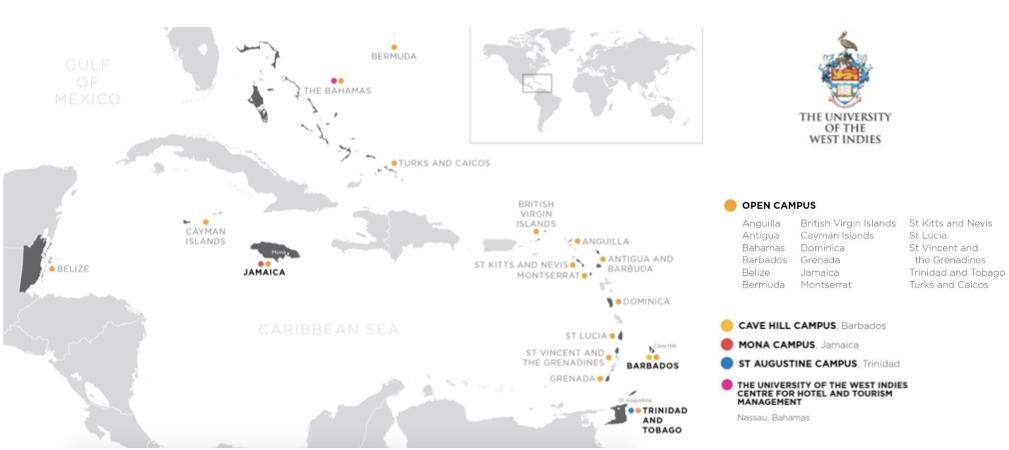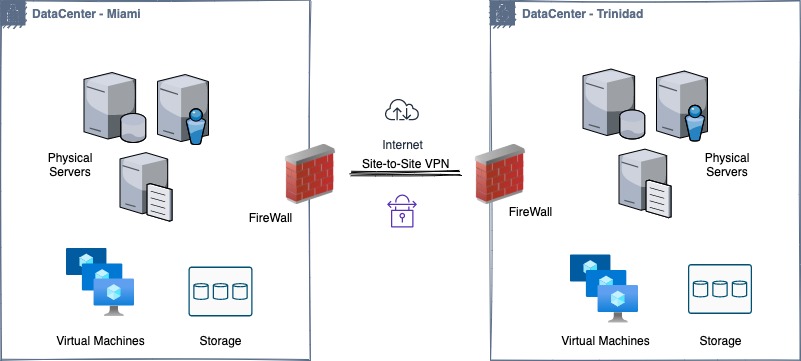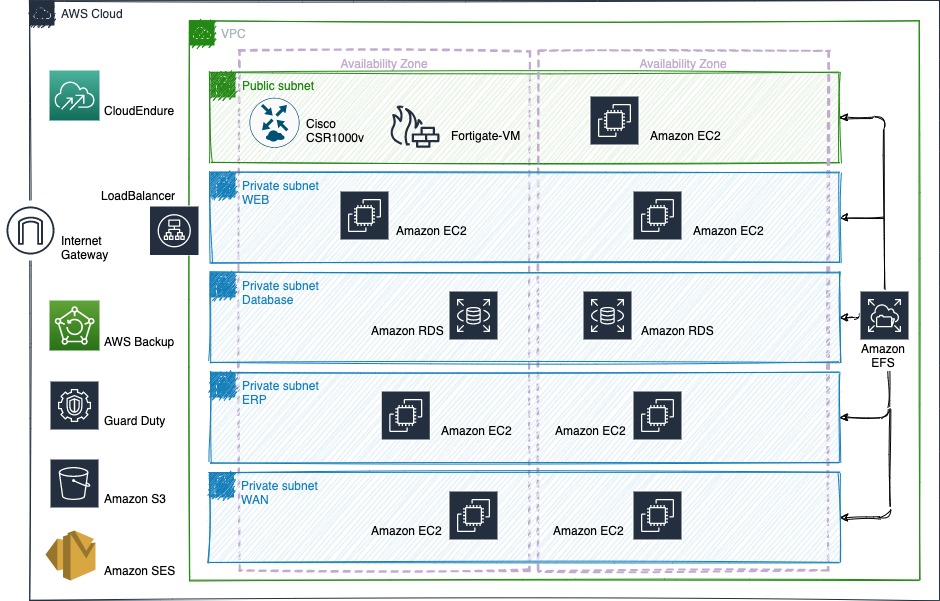AWS Public Sector Blog
How one Caribbean university digitally transformed and saved money by migrating to the cloud
From its start as a university college of London in Jamaica with 33 medical students in 1948, The University of West Indies (UWI) today has grown to approximately 45,000 students and five campuses: Mona in Jamaica, St. Augustine in Trinidad and Tobago, Cave Hill in Barbados, Five Islands in Antigua and Barbuda and its Open Campus, and 10 global centres in collaboration with universities in North America, Latin America, Asia, Africa, and Europe.
 Figure 1: A map of The University of West Indies campus locations.
Figure 1: A map of The University of West Indies campus locations.
The University of the West Indies, Open Campus (UWIOC) offers courses and programmes online and face-to-face through the 42 country sites located in 16 Caribbean countries. The courses range from short courses to bachelors, masters, and doctoral degrees.
In early 2020, UWIOC had to decide whether to replace aging hardware or migrate to the cloud while continuing to deliver the high levels of service that students, faculty, and staff had come to expect. In the midst of evaluating their options, the world entered into a global pandemic that affected supply chains and staff mobility, which made maintaining their existing data center challenging. Additionally, a cloud assessment showed potential savings of up to 50 percent in total cost of ownership (TCO) by migrating to the cloud. Backed by a strong business case, UWIOC decided to migrate to Amazon Web Services (AWS). Moving to AWS helped UWIOC improve performance of systems and operational efficiency while optimizing costs.

Figure 2: The on-premises UWIOC architecture.
Fast, four-step migration
UWIOC needed a migration strategy that would move applications with minimal changes and could be done quickly. After careful consideration of the “The 6 R’s”: 6 Application Migration Strategies, re-hosting (“lift and shift”) emerged as their best choice. Rehosting, or lift-and-shift, is defined as moving applications without changes.
Next, UWIOC tested this approach by migrating their most complex application: an enterprise resource planning (ERP) system called Ellucian Banner. UWIOC followed a four step migration process: build, migrate, test, and optimize with the objective to enable services such as Amazon Elastic Compute Cloud (Amazon EC2) to host the app front and backend, and Amazon Elastic Filesystem (Amazon EFS) to deliver a serverless elastic file system used to share required data across their Amazon EC2 instances without provisioning or managing storage. All of these services where configured inside an Amazon Virtual Private Cloud (Amazon VPC) which defines their new cloud-based data center, along with network definitions and security considerations.
Enabling AWS services from on premise can be achieved by using AWS Application Migration Service (AWS MGN), as it provides a highly automated lift-and-shift solution. AWS MGN natively supports operating systems such as Windows Server, Oracle Linux, and CentOS; application servers such as Oracle Weblogic, Apache Tomcat, and Webservers; and databases like Oracle Enterprise Database, MySQL/MariaDB, and Microsoft SQL Server — all part of UWIOC’s complex virtual environment.
UWIOC migrated their ERP system Ellucian Banner to an AWS test environment, registering it as a success in the first attempt: applications behaved as expected with minimal configuration changes. Initial testing by the functional team confirmed all ERP modules worked as expected and performance benchmarks showed improvements in resource consumption.

Figure 3: The UWIOC cloud architecture.
The production cutover was scheduled over a 24-hour maintenance window, but was completed in a third of that time—in only eight hours. UWIOC IT team handed over the migrated system to their functional teams for final user acceptance-testing; after approval, the systems were released into production and then available to all users.
Preparing for student registration
For UWIOC, one of the most important events of the year is student registration. The school’s ERP system historically registers most concurrency on the first day of student registration. More than 20 percent more students registered for school year 2020 than the previous year, but the system did not register a single issue related to latency, dropped requests, or failures; registration continued for several weeks with no technical issues.
With registration a success, UWIOC decided to continue the digital transformation by migrating their LMS, Moodle. The on-premise LMS was architected to handle peak demand even though the load varied greatly over time, which resulted on idle hardware for considerable amounts of time.
Leveraging AWS services such as Amazon EC2 Auto Scaling, Amazon EFS, and Amazon Relational Database Service (Amazon RDS) for MySQL, UWIOC was able to re-platform the existing LMS and enable it to dynamically scale up or down to meet demand and keep costs under control.
After the migration phase, UWIOC relied on AWS Well-Architected and executed the AWS Well Architected Tool. The AWS Well Architected Tool helps review the state of workloads and compares them to the latest AWS architectural best practices.
Based on AWS Well Architected Tool findings, UWIOC enabled a one-year savings plan for Amazon EC2 instances and purchased Reserved Instances for dedicated hosts. After six months of running on AWS, they identified potential for further savings by using AWS Elastic Block Storage new gp3 disks, modernized current EC2 Instances to new A1 instances using AWS Graviton processors, as well as making use of AWS Compute Optimizer to further right-size instances.
50% total cost of ownership reduction on AWS
UWIOC migrated more than 70 virtual machines, 10 applications, and five networks. A total of 6TB of data were migrated in a re-hosting strategy and two additional applications (their LMS, Moodle, and the UWIOC website) were re-platformed successfully. UWIOC realized a 50 percent reduction in TCO compared to their on-premise environment. The rest of UWI campuses are now exploring AWS services to enable solutions such as storage and DRP, remote collaboration, and enabling remote education solutions for their alumni.
Learn more about the cloud for higher education and learning management systems.
Subscribe to the AWS Public Sector Blog newsletter to get the latest in AWS tools, solutions, and innovations from the public sector delivered to your inbox, or contact us.